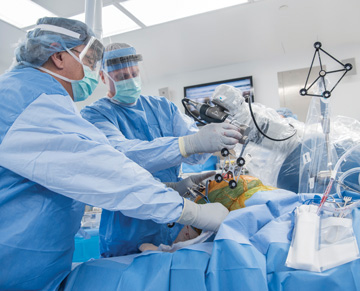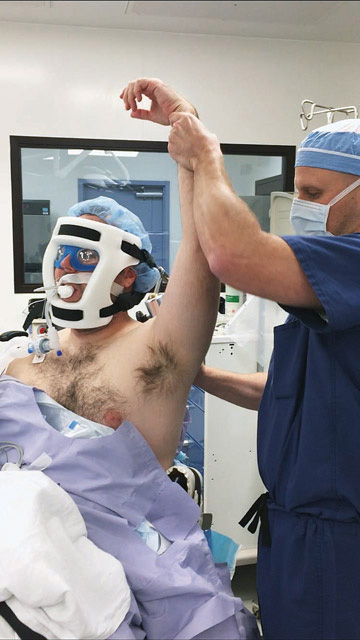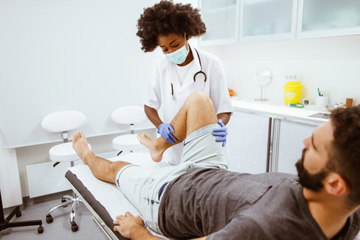Robotic assistance, navigation systems and smart implants are giving surgeons a chance to look at the bigger picture for their patients.
 TIME TO THINK Dr. David Mayman says robotic assistance enables surgeons to be more flexible and thoughtful about creating better outcomes during operations.
TIME TO THINK Dr. David Mayman says robotic assistance enables surgeons to be more flexible and thoughtful about creating better outcomes during operations.
Robotic-assisted joint replacement surgery continues to gain momentum, even though there isn’t much data that shows the technology leads to better joint function.
Orthopedic surgeon David J. Mayman, MD, a joint replacement specialist at the Hospital for Special Surgery in New York City, is a believer in the technology. He says computerized navigation and robotics result in more precise and accurate bone cuts and implant placement than what’s possible with traditional mechanical guides.
Dr. Mayman says the user-friendliness of the latest robotic platforms is helping surgeons achieve high-quality outcomes, unlike earlier generations that were also more expensive, consumed more space and required more time to set up.
Robotic navigation systems work off CT scans of the patient’s joint, providing surgeons with a 3D reconstruction of the unique anatomy. Surgeons then can plot out procedures virtually, including where and how they’ll place implants.
The navigation system then guides surgeons as they make cuts and place implants to ensure they remain in the targeted zone determined by the navigation technology. “Working with a tool that provides reproduceable accuracy allows surgeons to be more precise in their pre-op planning,” says Dr. Mayman. “They’re able to spend more time analyzing ligament alignment and soft tissue balancing in the knee and determining how the anatomy of the pelvis and spine will impact hip replacements.”
He says working with robotics enables surgeons to think about surgeries from a wider perspective. “Instead of focusing on the individual tasks of the case, they’re thinking about why they’re performing them and how they fit into the overall scheme,” says Dr. Mayman. They can also consider making minor modifications in real time, which could lead to better outcomes, he adds.
Robotic assistance also provides surgeons with more confidence in performing technically challenging partial knee replacements, notes Dr. Mayman. “Robotics makes partial knee replacements a more precise and reproduceable procedure,” he says.
As the number of robot-enabled joint replacement procedures increases, Dr. Mayman anticipates significant advances in what the technology enables surgeons to do over the next five years. He believes the tech will also provide a deeper dive into outcomes. “Surgeons will capture data from a very precise tool and see how minor modifications made to surgical techniques impact how well patients do,” he says. “That large feedback loop will eventually help surgeons determine how to best treat individual patients.”
Additionally, the emergence of implants embedded with smart sensors located in the small stem of the tibial component could capture kinematic data — joint range of motion, step count, stride length, distance traveled, average walking speed — and send it to a cloud-based dashboard that surgeons can access to monitor the post-op function of the patient’s knee and track the progress of their rehab and recovery.
“The data is currently very limited, but the capability of the technology is immense,” says Dr. Mayman. “In the future, will smart implants detect early infections or wear and tear and loosening of implants? It’s a brand-new application that carries a lot of potential, so we’ll have to see where it goes.”
.svg?sfvrsn=be606e78_3)



.svg?sfvrsn=56b2f850_5)